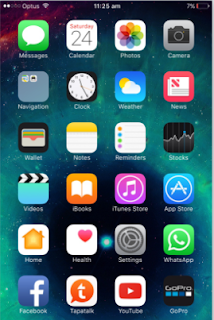Grid design:
 - Flow lines:
- Flow lines:
- Spatial zones (or) Regions:
1. Manuscript Grid
3. Baseline Grids:
- A grid is a two dimensional structure made up of a series of intersecting straight like vertical, horizontal (or) curved guide lines used to structure content.
- It makes easier for designers to work and collaborate on the design as they provide a plan for where to place the elements.
- The grid is made up of several parts. Not every part is present in every grid, it depends on the sort of grid.
- The most important parts of a grid are:
- The format is the full area where the final design will be laid out.
- In print design, the format is the page and in web design the is the browser window.
- Margin:
- Margins are the empty spaces between the edges of the format and content.
- The size of the margins is what gives the content a general shape, usually a rectangle.

- Flow lines are horizontal lines that separate the different sections of a grid into parallel bands.
- They help the reader follow the content of the layout.
- Some flow lines are called hang lines and others called base lines.
- Modules are the building blocks of any grid.
- They are the spaces between the flow lines and vertical lines.
- Vertical groups of module together create columns and Horizontal groups create rows.
- Groups of adjacent modules in vertical and horizontal areas create spatial zones (or) regions.
- A vertical region can hold a block of text, a horizontal region can hold a video.
- Columns:
- Columns are vertical spatial zones (or) regions that fit fully from the top to the bottom margin.
- Rows:
- The spaces between rows and columns are Gutters.
- These should always be equal between columns (or) rows, in order to maintain a visual balance.
- Markers:
- It is used in documents, ebooks, pdfs and presentations with lots of text.
- Manuscript grids in a text document separate the header, the footer and the space on the edges (margins). The manuscript layout creates a rectangle inside the page (format), like a bounding box for text.
2. Column Grid:
- It is used for magazines to organize content in columns so it is easier to read.
- Magazines use column grids to place the text in easy-to-read sections.
- Column grids are used inside websites as well, like in online newspapers or blogs.
3. Baseline Grids:
- These are a bit more technical and are defined by the line in which the text sits. This grid creates a good reading rhythm for any design with lots of text.
- It will give the headings and subheadings a proportional space in relation to the body text, making them more pleasing to the reader.
- These are like a checkerboard that can display many things for easy access.
- Newspapers use column and modular grids to organize the stories comfortably and easy to read.
5. Hierarchical grids:
- These are mostly used on websites, organizing content according to their importance.
- The purpose of a hierarchical grid design is to organize elements in order of importance.

















